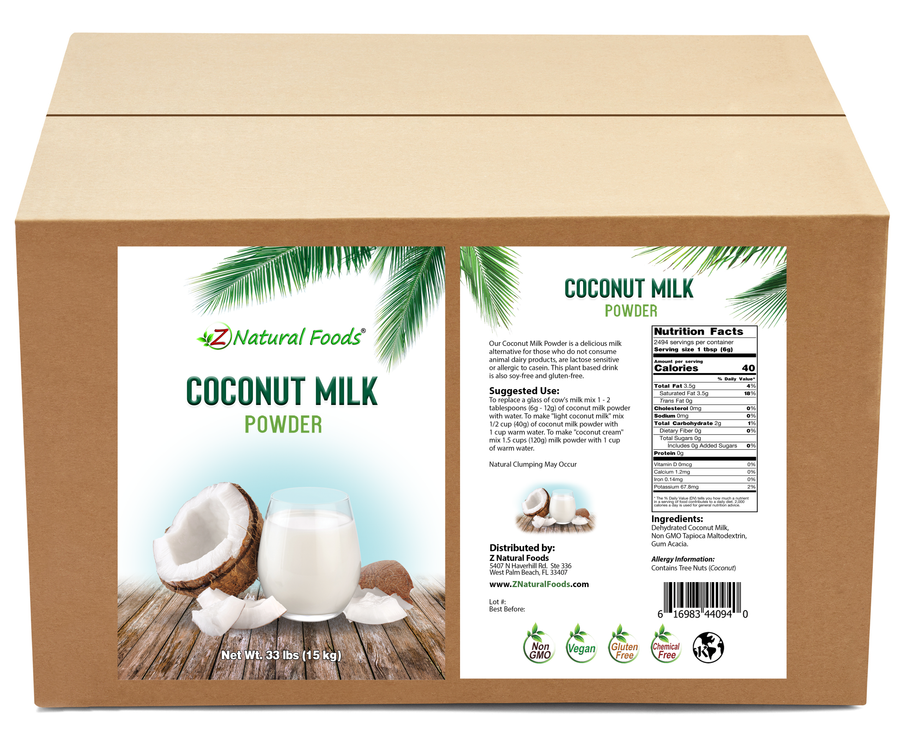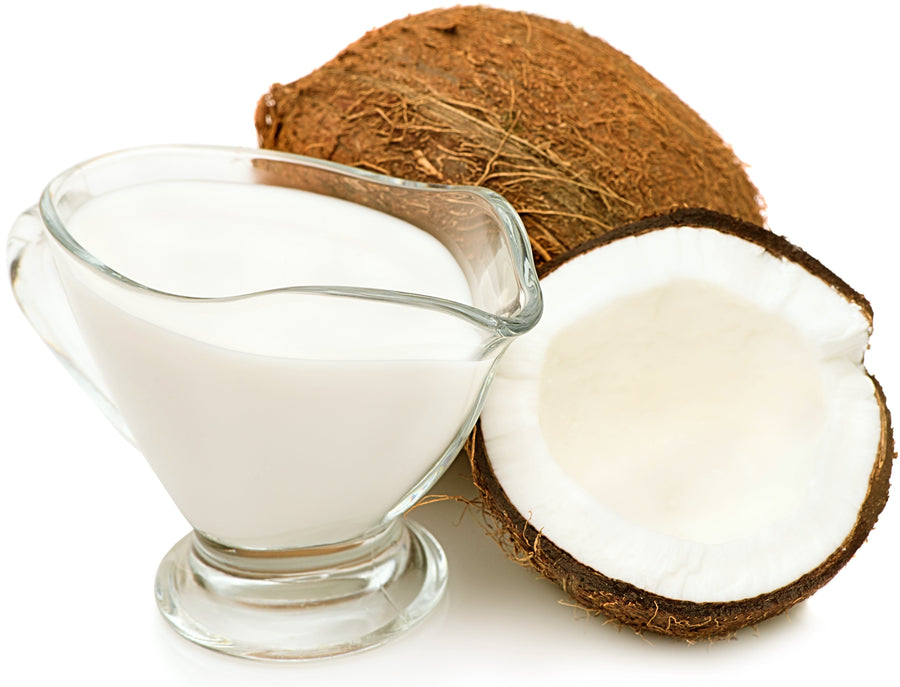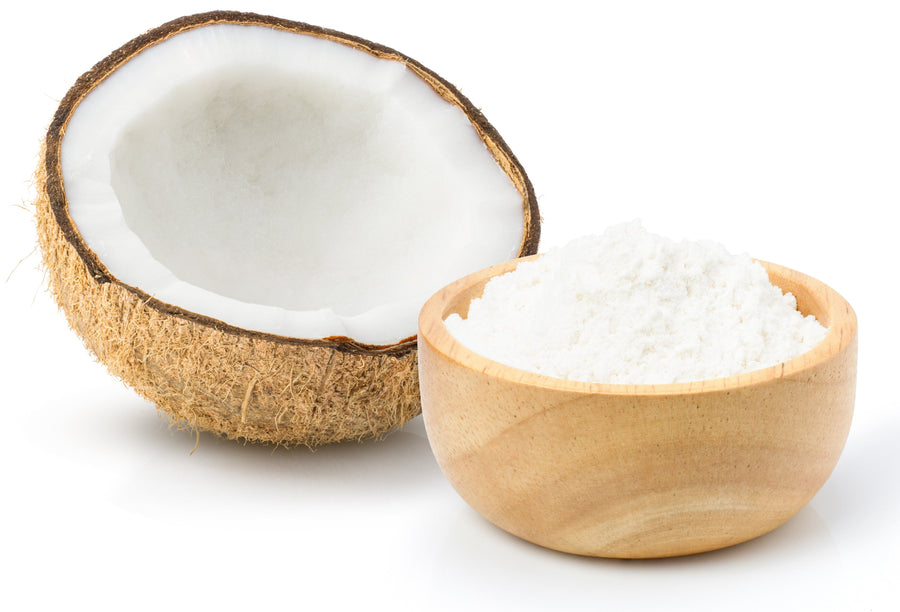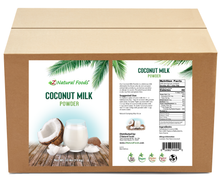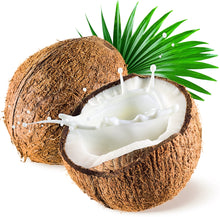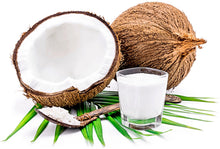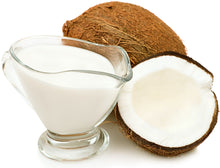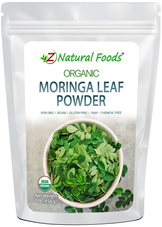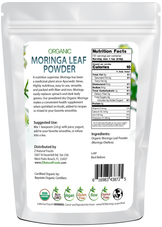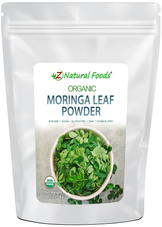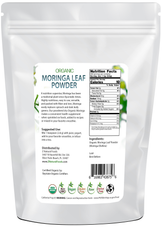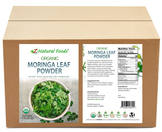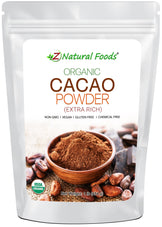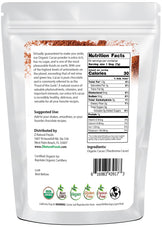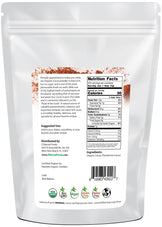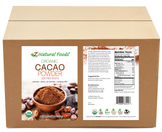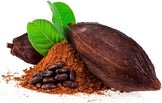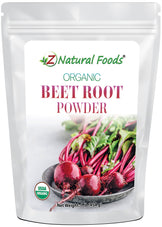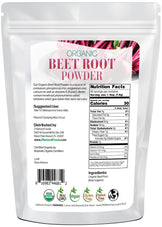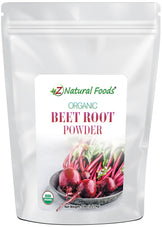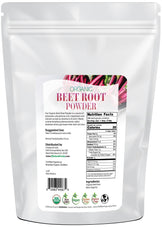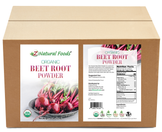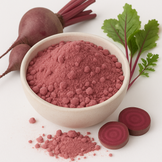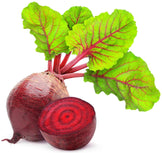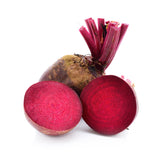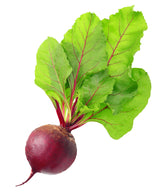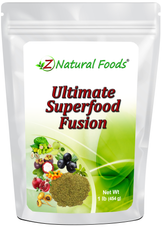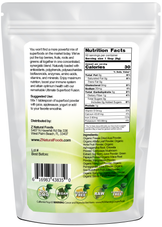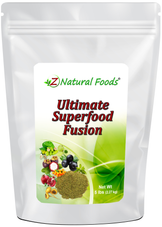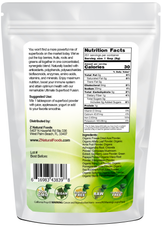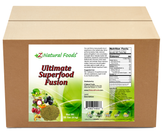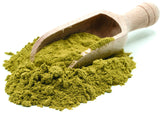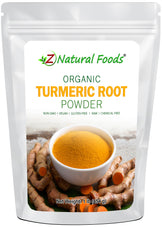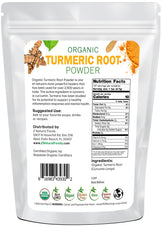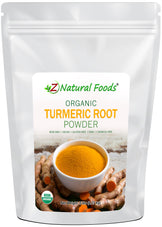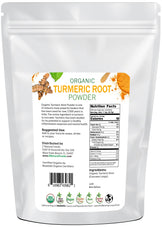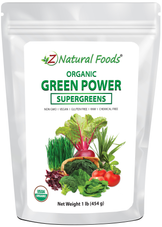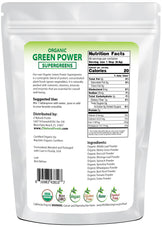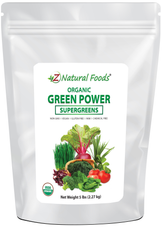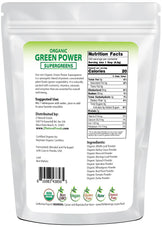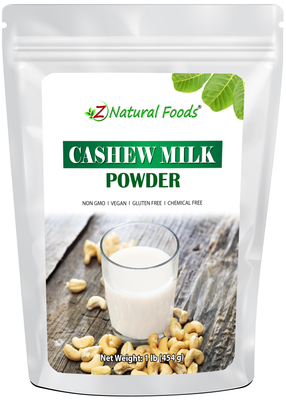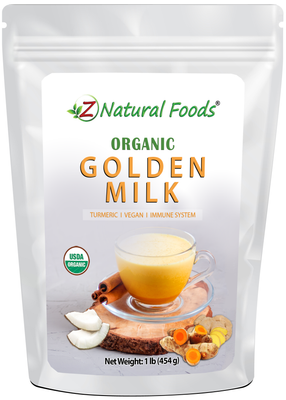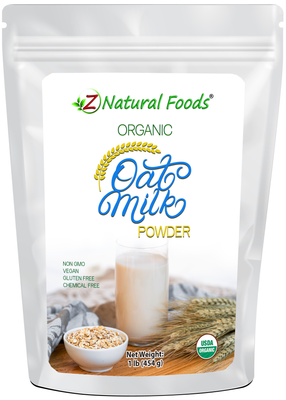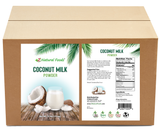About Product
Coconut Milk Powder is made by drying coconut milk extracted from the flesh of mature coconuts. With its rich, creamy flavor and smooth texture, it is a versatile ingredient used in curries, soups, sauces, and desserts. Simply mix with water for coconut milk on demand or stir directly into recipes.
This convenient, shelf-stable powder is easy to store and use, offering a long-lasting alternative to fresh coconut milk. It blends effortlessly into both sweet and savory dishes, making it a pantry staple for home cooks and chefs alike.
Some research suggests that Coconut may contain the following constituents:
Fatty Acid Content: Lauric Acid, Myristic Acid, Caprylic Acid, Capric Acid, Palmitic Acid, Oleic Acid, Palmitoleic Acid, Linoleic Acid, Linolenic Acid, Stearic Acid
- Phospholipids: Phosphatidylcholine, Phosphatidylethanolamine, Phosphatidylinositol, Phosphatidylserine, Lysophosphatidylcholine, Lysophosphatidylethanolamine, phosphatidic acid
- Tocopherols
- Sterols: B-Sitosterol, Stigmasterol, Avenasterol Campesterol, Stigmasterol Brassicasterol
- Minerals: Magnesium, Phosphorus, Zinc
- Vitamins: Vitamin C, Thiamin, Riboflavin, Niacin, Vitamin B-6, Folate, Vitamin E (Alpha), Vitamin K
- Amino Acids: Tryptophan, Threonine, Isoleucine, Leucine, Lysine, Methionine, Cystine, Phenylalanine, Tyrosine, Valine, Arginine, Histidine, Alanine, Aspartic Acid, Glutamic Acid, Proline, Serine
Due to its nature, this powder tends to clump, especially if it gets cold:
- If clumping occurs, warm the product up, lay the bag flat, and place a towel over the bag.
- Then pound on the bag until the clumps break up.
- The towel will help protect the bag from damage.
Suggested Use:
- Mix 1 - 2 tablespoons (6g - 12g) of coconut milk powder with water to replace a glass of cow's milk. Coconut milk powder is also delicious when mixed with desserts, recipes, yogurt, or added to your favorite smoothie.
- To make "light coconut milk," mix 1/2 cup (40g) of coconut milk powder with 1 cup of warm water.
- To make "coconut cream," mix 1.5 cups (120g) of coconut milk powder with 1 cup of warm water.
Mixing suggestions: To increase flavor and nutritional profile, combine with our organic banana flakes in a smoothie.
Miscellaneous Facts about our Coconut Milk Powder
Ingredients: Coconut Milk, Tapioca Maltodextrin (Derived from non-GMO Yuca Root*), Gum Acacia.
Botanical Source: Cocos nucifera.
Parts Used: Coconut Meat.
Other Names: Santam, Gata, Coconut Cream.
Allergy Warning: Contains tree nuts.
Origin: Grown and dried in Vietnam. Packaged with care in Florida, USA.
*This product contains a small amount of tapioca starch, which is a starch made from organically grown non-GMO yuca root (cassava root). This starch acts as a drying agent and is necessary to keep this powder from clumping into hard chunks or one solid brick. Please go here to learn more about why we use non-GMO Yuca Maltodextrin in some products.
How to Maintain Optimum Freshness
- This product is packaged in airtight stand-up, resealable foil pouches for optimum freshness.
- Once opened, push the air out of the pouch before resealing it to preserve maximum potency.
- Keep your powder in a cool, dark, dry place.
This product is 100% natural and minimally processed:
Taste, smell, texture, and color vary from batch to batch. Go here to learn why our products may naturally vary.
The important protections we take to bring you safe and nutritious superfoods:
Please go here to discover the essential steps we take to deliver fresh, quality nutrition.
Bulk Quantities?
Need to order a large quantity of our products? We are happy to help! Please get in touch with our Bulk department to discuss the details.
* Product packaging, pictures, and origin may vary.
Sources & References
1. A. A. Nanji, et al. Gastroenterology 109(2) (August 1995):547-554; Y. S. Cha and D. S. Sachan, J. Am. Coll. Nutr. 13(4) (August 1994): 338-343; H. L. Hargrove, et al.,FASEB Journal, Meeting Abstracts 204.1 (March 1999):A222.
2. J. J. Kabara, The Pharmacological Effects of Lipids (Champaign, IL: The American Oil Chemists Society, 1978), pp. 1-14; L. A. Cohen, et al., J. Natl. Cancer Inst. 77 (1986): 43.
3. Kiyasu, G. Y., et al. The portal transport of absorbed fatty acids. Journal of Biological Chemistry 1952;199:415.
4. Greenberger, N. J. and Skillman, T. G. Medium-chain triglycerides: physiologic considerations and clinical implications. N Engl J Med 1969;280:1045.
5. Geliebter, A. Overfeeding with medium-chain triglycerides diet results in diminished deposition of fat. Am J of Clin Nutr 1983;37:104.
6. Baba, N. Enhanced thermogenesis and diminished deposition of fat in response to overfeeding with a diet containing medium chain triglycerides. Am J of Clin Nutr1982;35:678.
7. Bulatao-Jayme, J., et al. Epidemiology of primary liver cancer in the Philippines with special consideration of a possible aflatoxin factor. J Philippine Med Assoc1976;52(5-6):129-150.
8. Kono, H. et al. Medium-chain triglycerides enhance secretory IgA expression in rat intestine after administration of endotoxin. Amer Journ Physio Gastrointest Liver Physio 2004;286:G1081-1089.
9. Dave, J. R., et al. Dodecylglycerol provides partial protection against glutamate toxicity in neuronal cultures derived from different regions of embryonic rat brain.Mol Chem Neuropathol 1997;30:1-13.
10. Lim-Sylianco, C. Y., et al. A comparison of germ cell antigenotoxic activity of non-dietary and dietary coconut oil and soybean oil. Phil Journal of Coconut Studies1992;2:1-5.
11. Lim-Sylianco, C. Y., et al. Antigenotoxic effects of bone marrow cells of coconut oil versus soybean oil. Phil Journal of Coconut Studies 1992;2:6-10.
12. Lim-Navarro, P. R. T. Protection effect of coconut oil against E coli endotoxin shock in rats. Coconuts Today 1994;11:90-91.
13. Bergsson, G., et al. Killing of Gram-positive cocci by fatty acids and monoglycerides. APMIS 2001;109(10):670-678.
14. Wan, J. M. and Grimble, R. F. Effect of dietary linoleate content on the metabolic response of rats to Escherichia coli endotoxin. Clinical Science 1987;72(3):383-385.
15. Bergsson, G., et al. In vitro inactivation of Chlamydia trachomatis by fatty acids and monoglycerides. Antimicrobial Agents and Chemotherapy 1998;42:2290.
16. Holland, K. T., et al. The effect of glycerol monolaurate on growth of, and production of toxic shock syndrome toxin-1 and lipase by Staphylococcus aureus.Journal of Antimicrobial Chemotherapy 1994;33:41.
17. Petschow, B. W., Batema, B. P., and Ford, L. L. Susceptibility of Helicobacter pylori to bactericidal properties of medium-chain monoglycerides and free fatty acids.Antimicrobial Agents and Chemotherapy 1996;40:302-306.
18. Wang, L. L. and Johnson, E. A. Inhibition of Listeria monocytogenes by fatty acids and monoglycerides. Appli Environ Microbiology 1992;58:624-629.
19. Bergsson, G., et al. In vitro killing of Candida albicans by fatty acids and monoglycerides. Antimicrobial Agents and Chemotherapy 2001;45(11):3209-3212.
20. Isaacs, E. E., et al. Inactivation of enveloped viruses in human bodily fluids by purified lipid. Annals of the New York Academy of Sciences 1994;724:457.
21. Hierholzer, J. C. and Kabara, J. J. In vitro effects of monolaurin compounds on enveloped RNA and DNA viruses. Journal of Food Safety 1982;4:1.
22. Thormar, H., et al. Inactivation enveloped viruses and killing of cells by fatty acids and monoglycerides. Antimicrobial Agents and Chemotherapy 1987;31:27.
23. Kabara, J. J. The Pharmacological Effect of Lipids. Champaign, Ill: The American Oil Chemists’ Society, 1978.
24. Isaacs, C. E., et al. Antiviral and antibacterial lipids in human milk and infant formula feeds. Archives of Disease in Childhood 1990;65:861-864.
25. Isaacs, C. E., et al. Membrane-disruptive effect of human milk: inactivation of enveloped viruses. Journal of Infectious Diseases 1986;154:966-971.
26. Isaacs, C. E., et al. Inactivation of enveloped viruses in human bodily fluids by purified lipids. Annals of the New York Academy of Sciences 1994;724:457-464.
27. Reiner, D. S., et al. Human milk kills Giardia lamblia by generating toxic lipolytic products. Journal of Infectious Diseases 1986;154:825.
28. Crouch, A. A., et al. Effect of human milk and infant milk formulae on adherence of Giardia intestinalis. Transactions of the Royal Society of Tropical Medicine and Hygiene 1991;85:617.
29. Chowhan, G. S., et al. Treatment of Tapeworm infestation by coconut (Cocos nucifera) preparations. Association of Physicians of India Journal. 1985;33:207.
30. Sutter, F., et al. Comparative evaluation of rumen-protected fat, coconut oil and various oilseeds supplemented to fattening bulls. 1. Effects on growth, carcass and meat quality. Arch. Tierernahr. 2000;53(1):1-23.
31. Chowhan, G. S., et al. Treatment of tapeworm infestation by coconut (Cocos nucifera) preparations. J. Assoc. Physicians India 1985;33(3):207-209.
32. Dayrit, C. S. Coconut Oil in Health and Disease. Its and Monolaurin’s Potential as Cure for HiV/AIDS. Paper presented at the 37th Annual Cocotech Meeting, Chennai, India, July 25, 2000.
33. Tantibhedhyangkul, P. and Hashim, S. A. Medium-chain triglyceride feeding in premature infants: effects on calcium and magnesium absorption. Pediatrics1978;61(4):537.
34. Jiang, Z. M., et al. A comparison of medium-chain and long-chain triglycerides in surgical patients. Ann Surg 1993:217(2):175.
35. Fushiki, T. and Matsumoto, K. Swimming endurance capacity of mice is increased by chronic consumption of medium-chain triglycerides. Journal of Nutrition1995;125:531.
36. Applegate, L. Nutrition. Runner’s World 1996;31:26.
37. Stubbs, R. J. and Harbron, C. G. Covert manipulation of the ration of medium- to long-chain triglycerides in isoenergetically dense diets: effect on food intake in ad libitum feeding men. Int. J. Obs 1996;20:435-444.
38. Scalfi, L., et al. Postprandial thermogenesis in lean and obese subjects after meals supplemented with medium-chain and long-chain triglycerides. Am J Clin Nutr1991;53:1130-1133.
39. Dulloo, A. G., et al. Twenty-four-hour energy expenditure and urinary catecholamines of humans consuming low-to-moderate amounts of medium-chain triglycerides: a dose-response study in a human respiratory chamber. Eur J Clin Nutr1996;50(3):152-158.
40. St-Onge, M. and Jones, P. J. H. Physiological effects of medium-chain triglycerides: potential agents in the prevention of obesity. J of Nutr2002;132(3):329-332.
41. Sadeghi, S., et al. Dietary lipids modify the cytokine response to bacterial lipopolysaccharide in mice. Immunology 1999;96(3):404-410.
42. Isaacs, C. E. and Thormar, H. The role of milk-derived antimicrobial lipids as antiviral and antibacterial agents in Immunology of Milk and the Neonate (Mestecky, J., et al., Eds) 1991 Plenum Press.
43. Witcher, K. J., et al. Modulation of immune cell proliferation by glycerol monolaurate. Clin Diagn Lab Immunology 1996;3(1):10-13.
44. Arranza, J. L. The Dietary Fat Produced in Asian Countries and Human Health. Paper presented at the 7th Asian Congress of Nutrition in Beijing, October 8, 1995.
45. Reddy, B. S. and Maeura, Y. Tumor promotion by dietary fat in azoxymethane-induced colon carcinogenesis in female F344 rats: influence of amount and source of dietary fat. J Natl Cancer Inst 1984;72(3):745-750.
46. Cohen, L. A. and Thompson, D. O. The influence of dietary medium-chain triglycerides in rat mammary tumor development. Lipids 1987;22(6):455-461.
47. Cohen, L. A., et al. Influence of dietary medium-chain triglycerides on the development of N-methynitrosourea-induced rat mammary tumor. Cancer Res1984;44(11):5023-5028.
48. Nolasco, N. A., et al. Effect of coconut oil, trilaurin and tripalmitin on the promotion stage of carcinogenesis. Philippine Journal of Science 1994;123(1):161-169.
49. Bulatao-Jayme, J., et al. Epidemiology of primary liver cancer in the Philippines with special consideration of a possible aflatoxin factor. J Philippine Med Assoc1976;52(5-6):129-150.
50. Ling, P. R., et al. Structured lipid made from fish oil and medium-chain triglycerides alters tumor and host metabolism in Yoshida-sarcoma-bearing rats.Amer Journal Clin Nutr 1991;53(5):1177-1184.
51. Witcher, K. J., et al. Modulation of immune cell proliferation by glycerol monolaurate. Clinical and Diagnostic Laboratory Immunology 1996;3:10-13.
52. Kono, H., et al. Medium-chain triglycerides inhibit free radical formation and TNF-alpha production in rats given enteral ethanol. Amer J Physiol Gastrointest Liver Physiol 2000;278(3):G467.
53. Cha, Y. S. and Sachan, D. S. Opposite effects of dietary saturated and unsaturated fatty acids on ethanol-pharmacokinetics, triglycerides and carnitines. J Am Coll Nutr 1994;13(4):338.
54. Nanji, A. A., et al. Dietary saturated fatty acids: a novel treatment for alcoholic liver disease. Gastroenterology 1995;109(2):547.
55. Trocki, O. Carnitine supplementation vs. medium-chain triglycerides in postburn nutritional support. Burns Incl Therm Inj 1988;14(5):379-387.
56. Stewart, J. W., et al. Effect of various triglycerides on blood and tissue cholesterol of calves. Journal of Nutrition 1978;108:561-566.
57. Awad, A. B. Effect of dietary lipids on composition and glucose utilization by rat adipose tissue. Journal of Nutrition 1981;111:34-39.
58. Skrzydlewska, E., et al. Antioxidant status and lipid peroxidation in colorectal cancer. Journal Toxicol Environ Health A 2001;64(3):213-222.
59. Witcher, K. J., et al. Modulation of immune cell proliferation by glycerol monolaurate. Clinical and Diagnostic Lab Immunology 1996;3:10-13.
60. Hashim, S. A., et al. Effect of mixed fat formula feeding on serum cholesterol level in men. Amer Journal Clinical Nutrition 1959;7:30-34.
61. Hegsted, D. M., et al. Qualitative effects of dietary fat on serum cholesterol in men. Amer Journal Clinical Nutrition 1965;17:281.
62. Kintanar, Q. L. Is coconut oil hypercholesterolemic and atherogenic? A focused review of the literature. Trans Fat Academy Science and Technology (Phil)1988;10:371-414.
63. Blackburn, G. L., et al. A reevaluation of coconut oil’s effect on serum cholesterol and atherogenesis. Journal Philippine Med Assoc 1989;65(1):144-152.
64. Kaunitz, H. and Dayrit, C. S. Coconut oil consumption and coronary heart disease. Philippine Journal Internal Med 1992;30:165-171.
65. Calabrese, C., et al. A cross-over study of the effect of a single oral feeding of medium-chain triglyceride oil vs. canola oil on post-ingestion plasma triglyceride levels in healthy men. Alternative Med Rev 1999;4(1):23-28.
66. Borque, C., et al. Consumption of oil composed of medium-chain triacyglycerols, phytosterols, and N-3 fatty acids improves cardiovascular risk profile in overweight women. Metabolism 2003;52(6):771-777.
67. Kaunitz, H. and Dayrit, C. S. Coconut oil consumption and coronary heart disease. Philippine Journal Internal Med 1992;30:165-171.
68. Dayrit, C. S. Coconut Oil: Atherogenic or Not? Philippine Journal of Cardiology 2003;31:97-104.
69. Bach, A. C. and Babayan, V. K. Medium-chain triglycerides: an update. Amer Journal Clinical Nutrition 1982;36:960-962.
70. Garfinkel, M., et al. 1992. Insulinotropic potency of lauric acid: a metabolic rationale for medium-chain fatty acids (MCFA) in TPN formulation. Journal Surg Res52:328-333.
71. Han, J., et al. Medium-chain oil reduces fat mass and down-regulates expression of adipogenic genes in rats. Obesity Res 2003;11(6):734-744.
72. Trinidad, T. P., et al. Glycemic index of different coconut (Cocos nucifera)-flour products in normal and diabetic subjects. British Journal of Nutrition 2003;90:551-556.
73. Larsen, L. F., et al. Effects of dietary fat quality and quantity on postprandial activation of blood coagulation factor VII. Arteriosclerosis, Thrombosis and Vascular Biology. 1997;17(11):2904-2909.
74. McGregor, L. Effects of feeding with hydrogenated coconut oil on platelet function in rats. The Proceedings of the Nutrition Society. 1974 May;33(1):1A-2A.
75. Mensink, R. P. and Katan, M. B. Effect of dietary transfatty acids on high density and low density lipoprotein cholesterol levels in healthy subjects. N. Eng. J. Med.323(1999):439-445.
76. Willet, W. Editorial: Challenges for public health nutrition in the 1990s. Am. J. Public Health. 80(1990):1295-1298.
77. Pietinen, P., Ascherio, A., Korhonen, P., et al. Intake of fatty acids and risk of coronary heart disease in a cohort of Finnish men. The Alpha-Tocopherol-BetaCarotene Cancer Prevention Study. Am. J. Epidemiol. 145(1997):876-887.
78. Garg, M. L., et al. FASEB Journal 2(4) (1988): A852; Oliart Ros, R. M., et al. Meeting Abstracts, AOCS Proceedings, May 1998, p. 7, Chicago, IL.
79. Watkins, B. A., et al. Importance of vitamin E in bone formation and in chrondrocyte function, Purdue University, Lafayette, IN, AOCS Proceedings, 1996
80. Watkins, B. A., and Seifert, M. F., Food lipids and bone health, in Food Lipids and Health, McDonald, R. E. and Min, D. B., eds. (New York, Marcel Dekker, 1996), p. 101.
81. Pimentel, M., et al. Normalization of lactulose breath testing correlates with symptom improvement in irritable bowel syndrome: a double-blind, randomized, placebo-controlled study. American Journal Gastroenterology 2003;98(2):412-419.
82. Kono, H., et al. Medium-chain triglycerides enhance secretory IgA expression in rat intestine after administration of endotoxin. American Journal Physiology2004;286:G1081-1089.
83. Salmon, W. D. and Goodman, J. G. Journal Nutrition 1937;13:477. Quoted by Kaunitz, H. Nutritional properties of coconut oil. APCC Quarterly Supplement 30 December 1971, p 35-57.
84. Cunningham, H. M. and Lossli, J. K. Dairy Science 1953;453. Quoted by Kaunitz, H. Nutritional properties of coconut oil. APCC Quarterly Supplement 30 December 1971, p 35-57.
85. Dutta, N. C. Ann Biochem Expt Med 1948;8:69. Quoted by Kaunitz, H. Nutritional properties of coconut oil. APCC Quarterly Supplement 30 December 1971, p 35-57.
86. Sadasivan, V. Current Science 1950;19:28. Quoted by Kaunitz, H. Nutritional properties of coconut oil. APCC Quarterly Supplement 30 December 1971, p 35-57.
87. Vaidya, U. V., et al. Vegetable oil fortified feeds in the nutrition of very low birth weight babies. Indian Pediatrics 1992;29(12):1519.
88. Rele, A. S. and Mohile, R. B. Effect of mineral oil, sunflower oil and coconut oil on prevention of hair damage. Journal Cosmetic Science 2003;54(2):175-192.
89. Bierenbaum, J. L., et al. Modified-fat dietary management of the young male with coronary disease: a five-year report. JAMA 1967;202:1119-1123.
90. Prior, I. A., et al. Cholesterol, coconuts and diet in Polynesian atolls – a natural experiment; the Pukapuka and Tokelau island studies. American Journal Clinical Nutrition 1981;34:1552-1561.
91. Hopkins, G. J., et al. Polyunsaturated fatty acids as promoters of mammary carcinogenesis induced in Sprague-Dawley rats by 7, 12-dimethylbenz[a]anthracene. Journal National Cancer Institute 1981;66(3):517.
92. Dahlen, G. H., et al., Journal Internal Medicine 244(5) (November 1998): 417-424; Khosla, P. and Hayes, K. C., Journal American College Nutrition 15 (1996):325-339; Clevidence, B. A., et al., Arteriosclerosis Thrombosis Vascular Biology 17 (1997): 1657-1661.
93. Intengan, C. L., et al. Structured lipid of coconut and corn oils vs. soybean oil in the rehabilitation of malnourished children: a field study. Philippine Journal Internal Medicine 1992;30(30):159-164.
94. Seddon, J. M., et al. Progression of age-related macular degeneration: association with dietary fat, transunsaturated fat, nuts, and fish intake. Archives Ophthalmology 2003;121(12):1728-1737.
95. Ouchi, M., et al. A novel relation of fatty acid with age-related macular degeneration. Ophthalmologica 2002;216(5):363-367.
96. Seddon, J. M., et al. Dietary fat and risk for advanced age-related macular degeneration. Archives Ophthalmology 2001;119(8):1191-1199.
97. Bouillon, R., et al. Polyunsaturated fatty acids decrease the apparent affinity of vitamin D metabolites for human vitamin D-binding protein. Journal Steroid Biochemistry Molecular Biology 1992;42:855-861.
98. D’ Aquino, M., et al. Effect of fish oil and coconut oil on antioxidant defense system and lipid peroxidation in rat liver. Free Radical Research Communications1991;1:147-152.
99. Song, J. H., et al. Polyunsaturated (n-3) fatty acids susceptible to peroxidation are increased in plasma and tissue lipids of rats fed docosahexaenoic acid-containing oils. Journal Nutrition 2000;130(12):3028-3033.
100. Grune, T., et al. Enrichment of eggs with n-3 polyunsaturated fatty acids: effects of vitamin E supplementation. Lipids 2001;36(8):833-838.
101. Esterbauer, H. Cytotoxicity and genotoxicity of lipid-oxidation products.American Journal Clinical Nutrition 1993;57(5)Suppl:779S-785S.
102. Benzie, I. F. Lipid peroxidation: a review of causes, consequences, measurement and dietary influences. International Journal Food Sciences Nutrition1996;47(3):233-261.
103. Hostmark, A. T., et al. Plasma lipid concentration and liver output of lipoproteins in rats fed coconut fat or sunflower oil. Artery 1980;7:367-383.
104. Felton, C. V., et al. Dietary polyunsaturated fatty acids and composition of human aortic plaques. Lancet 1994;344:1195-1196.
105. Lawson, L. D. and Kummerow, F., Lipids 14 (1979):501-503; Garg, M. L., Lipids24(4) (April 1989):334-339.
106. Hu, F. B., et al. Dietary fat intake and the risk of coronary heart disease in women, New England Journal Medicine 1997;337:1491-1499.
107. Willet, W. C., et al. Intake of trans-fatty acids and risk of coronary heart disease among women. Lancet 1993;341:581-585.
108. Ascherio, A., et al. Trans fatty acids and coronary heart disease. New England Journal Medicine 1999;340:1994-1998.
109. Cater, N. B., et. al. Comparison of the effects of medium chain triacylglycerols, palm oil, and high oleic acid sunflower oil on plasma triacylglycerol fatty acids and lipid and lipoprotein concentrations in humans. American Journal Clinical Nutrition1997;65(1):41-45.
110. Enig, M. G., Ph.D., Health and Nutritional Benefits from Coconut Oil: An Important Functional Food for the 21st Century, Presented at the AVOC Lauric Oils Symposium, Ho Chi Minh City, Vietnam, April 25, 1996.
111. Natural Standard Monograph; Palm Oil; Christopher Chan; 2011
112. "The Journal of Nutrition"; Consumption of a Solid Fat Rich in Lauric Acid Results in a More Favorable Serum Lipid Profile in Healthy Men and Women than Consumption of a Solid Fat Rich in Trans-fatty Acids; Nicole M. deRoos; February 2001
113. European Food Safety Authority Journal; "Scientific Opinion on the Safety of Sucrose Esters of Fatty Acids..."; 2010
114. The AOCS Lipid Library; Commodity Oils and Fats - Palmkernel and Coconut Oils; February 2011
115. "Harvard Health Letter"; Ask the Doctor: I Have Started Noticing More Coconut Oil at the Grocery Store...; Walter Willett; May 2011
116. Beccari, O. The origin and dispersal of cocos nucifera. The Philippine journal of science, C. Botany, v.7, Jan. 1917: 27- 43. http://cocos.arecaceae.com/beccari.pdf
117. Davidson, Alan. Coconut in Penguin companion to food. New York, Penguin Reference, c2002. p. 239-241.
118. Duke, James A. Cocos nucifera L. in Handbook of nuts. Boca Raton, FL, CRC Press, c2001. p. 100-109.
119. Hill, Arthur W. The original home and mode of dispersal of the coconut. Nature, v. 124, July 27, 1929: 133-134, 151-153.
120. Macbean, Valerie. Coconut cookery: a practical cookbook encompassing innovative uses of the tropical drupe Cocus nucifera, accompanied by assorted information and anecdotes ranging from hard data to the frankly frivolous. Berkeley, Frog Ltd., North Atlantic Books, c2001. 198 p.
121. Modern coconut management: palm cultivation and products. Edited by J. G. Ohler. London, Intermediate Technology Publications, 1999. 458 p.
122. Rosengarten, Frederic Jr. Coconuts in The book of edible nuts. Mineola, NY, Dover Publications, 2004. p. 65-93.
123. Woodroof, Jasper Guy. Coconuts: production, processing, products. Westport, CT, AVI Publishing Co., 1970. 241 p.
124. http://blogs.naturalnews.com/go-crazy-coconut-oil-10-invisible-facts-coconut-oil/
125. http://www.ars-grin.gov/duke/
126. http://ndb.nal.usda.gov/ndb/foods
127. http://www.thealternativedaily.com/coconut-oil-top-natural-eye-lubricant/
128. http://expandedconsciousness.com/2016/08/19/this-man-ate-2-tbs-of-coconut-oil-twice-a-day-and-changed-his-brain/
129. Natural Standard Monograph; Palm Oil; Christopher Chan; 2011
130. "The Journal of Nutrition"; Consumption of a Solid Fat Rich in Lauric Acid Results in a More Favorable Serum Lipid Profile in Healthy Men and Women than Consumption of a Solid Fat Rich in Trans-fatty Acids; Nicole M. deRoos; February 2001
131. European Food Safety Authority Journal; "Scientific Opinion on the Safety of Sucrose Esters of Fatty Acids..."; 2010
132. The AOCS Lipid Library; Commodity Oils and Fats - Palmkernel and Coconut Oils; February 2011
133. "Harvard Health Letter"; Ask the Doctor: I Have Started Noticing More Coconut Oil at the Grocery Store...; Walter Willett; May 2011
134. Beccari, O. The origin and dispersal of cocos nucifera. The Philippine journal of science, C. Botany, v.7, Jan. 1917: 27- 43. http://cocos.arecaceae.com/beccari.pdf
135. Davidson, Alan. Coconut in Penguin companion to food. New York, Penguin Reference, c2002. p. 239-241.
136. Duke, James A. Cocos nucifera L. in Handbook of nuts. Boca Raton, FL, CRC Press, c2001. p. 100-109.
137. Hill, Arthur W. The original home and mode of dispersal of the coconut. Nature, v. 124, July 27, 1929: 133-134, 151-153.
138. Macbean, Valerie. Coconut cookery: a practical cookbook encompassing innovative uses of the tropical drupe Cocus nucifera, accompanied by assorted information and anecdotes ranging from hard data to the frankly frivolous. Berkeley, Frog Ltd., North Atlantic Books, c2001. 198 p.
139. Modern coconut management: palm cultivation and products. Edited by J. G. Ohler. London, Intermediate Technology Publications, 1999. 458 p.
140. Rosengarten, Frederic Jr. Coconuts in The book of edible nuts. Mineola, NY, Dover Publications, 2004. p. 65-93.
141. Woodroof, Jasper Guy. Coconuts: production, processing, products. Westport, CT, AVI Publishing Co., 1970. 241 p.
142. http://www.ars-grin.gov/cgi-bin/duke/farmacy2.pl
143. http://ndb.nal.usda.gov/ndb/foods/show/3695
* Reviews & Success Stories Disclaimer
Product reviews solely reflect the views and opinions expressed by the contributors and not those of Z Natural Foods. Z Natural Foods does not verify or endorse any claims made in these reviews. Statements have not been evaluated by the FDA and are not intended to diagnose, treat, cure, or prevent any disease or health condition.REFERRAL PROGRAM
Share your personal link to your friends and welcome them with rewards. Claim yours when they make their first purchase.

GIVE
$10 off discount

GET
$10 off discount
Other products in the same category
Cashew Milk Powder
$28.29
Golden Milk - Organic
$41.61
Cashew Milk Powder - Organic
$29.95
Oat Milk Powder - Organic
$24.96
